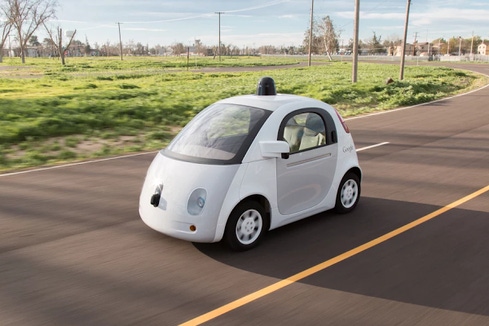The latest self-driving car prototypes from Google will roll on public roads in Mountain View, Calif., later this summer.


Meet Your IT Workers Of The Future
Meet Your IT Workers Of The Future (Click image for larger view and slideshow.)
After reassuring the public that its self-driving cars haven't caused any crashes, on Friday Google said it intends to let its latest self-driving car prototype traverse public roads in Mountain View, Calif., where the company has its headquarters.
Google employees have driven the company's fleet of 24 modified Lexus RX450h SUVs on public roads for several years. Now Google intends to take the smaller prototype model that it introduced last year, the model designed to operate without a steering wheel, into the wild.
However, during these low-speed tests, there will be a steering wheel.
"Each prototype's speed is capped at a neighborhood-friendly 25 mph, and during this next phase of our project we'll have safety drivers aboard with a removable steering wheel, accelerator pedal, and brake pedal that allow them to take over driving if needed," explained Chris Urmson, director of Google's self-driving car project, in a blog post.
Google's latest cars also include a foam front-end and a flexible windscreen to mitigate any unavoidable impact.
Through testing, Google hopes to refine its autonomous driving software so it can handle unusual situations and road conditions, such as an obstruction that prevents the vehicle from reaching its programmed destination. The company also hopes to understand how people interact with its vehicles, which remain quite a novelty.
Google's self-driving cars have been involved 11 minor accidents over the past six years, Urmson said recently. According to the company, its cars have not been at fault. Rather, they've been hit by other drivers.
If accurate -- and police reports for these incidents, if any, have not been made public -- this underscores data from the National Highway Transportation Safety Administration that 94% of vehicle accidents are caused by human error. It also supports one of the major rationales for developing self-driving cars: making roads safer by reducing the number of accident-prone (and often inebriated) human drivers.
[ Who are you going to believe? Google Automated Car Accidents: Not Our Fault. ]
In addition to safety, self-driving cars can provide a new mobility option for the elderly and disabled. They may also help reduce traffic congestion and free up space in crowded urban areas by serving as alternatives to private car ownership.
While private cars won't disappear -- beyond their aesthetic and emotional appeal, they remain a necessity in many areas of the US -- car companies like Ford are already seriously considering the nature of their business opportunities in densely populated cities where car ownership has become impractical and, for many, too expensive.
For businesses, autonomous vehicle technology is seen as a potential way to reduce costs. Daimler Trucks North America received a license from Nevada earlier this month to test its autonomous (though not unmanned) Freightliner Inspiration Truck on public roads in the state. Freightliner sees autonomous vehicle technology as a tool to help its drivers and businesses through improved safety and more efficient fuel consumption, which also reduce the environmental impact of driving.
[Did you miss any of the InformationWeek Conference in Las Vegas last month? Don't worry: We have you covered. Check out what our speakers had to say and see tweets from the show. Let's keep the conversation going.]
About the Author(s)
You May Also Like







